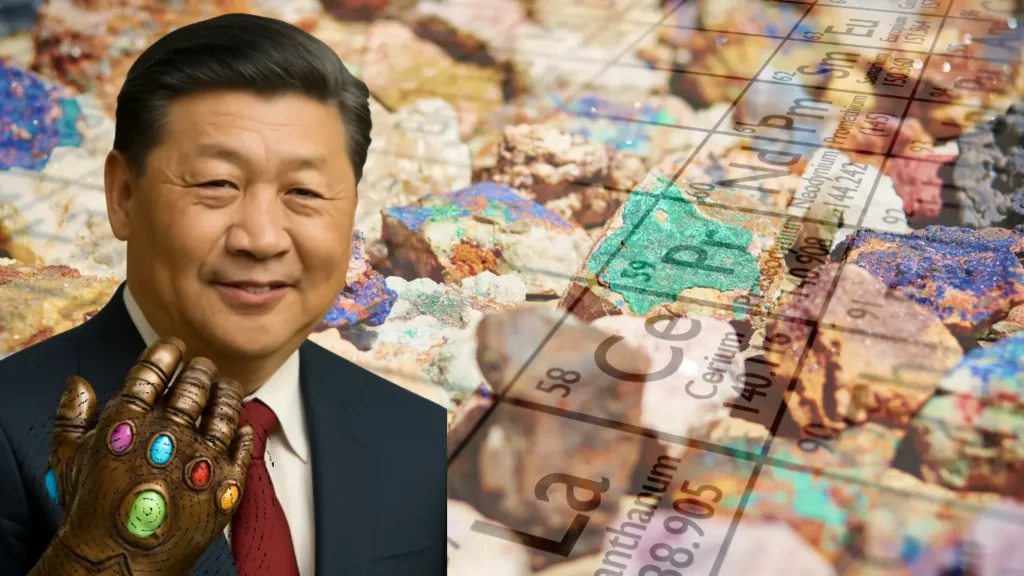
Rare earth minerals may sound like a mystery, but they play an essential role in modern life. From the smartphones in our pockets to the renewable energy solutions we rely on, these minerals are in everything. Whether you’re wondering what rare earth minerals are, curious about rare earth minerals in India, or trying to understand their role in AI tools, we’ve got you covered.
In this guide, we’ll break down the basics of rare earth minerals, explain where they come from, and help you understand why these metals are so vital for technology and innovation. Let’s dive in!
What Exactly Are Rare Earth Minerals?
At their core, rare earth minerals are a group of 17 elements found in the Earth’s crust. They might not be as “rare” as their name suggests, but they are often scattered across the globe in small concentrations, making them tricky to mine. These elements have unique properties that make them indispensable in the production of high-tech gadgets, clean energy solutions, and even military technology.
Though there are 17 rare earth elements, we often talk about just a few of them due to their importance in modern technology.
A Quick List of Rare Earth Minerals
Here’s a brief breakdown of some of the key rare earth minerals:
Light Rare Earth Elements (LREEs): These include lanthanum, cerium, neodymium, and praseodymium.
Heavy Rare Earth Elements (HREEs): These are dysprosium, yttrium, and erbium.
These minerals are at the heart of many technologies, like electric vehicles, smartphones, and even military defense systems. They’re essential for creating everything from magnets and batteries to lasers and catalysts. Source: USGS – Rare Earth Elements.
Where Can You Find Rare Earth Minerals?
If you’re wondering where rare earth minerals are found, the answer isn’t as simple as you might think. While these minerals exist all over the world, they’re not always easy to access. Right now, China is the leader in rare earth mineral production, holding around 70% of the global supply. But countries like India, the United States, and Australia are also starting to ramp up their mining efforts as demand for these minerals grows.
For example, rare earth minerals in India are becoming a hot topic as the country realizes the value these elements bring to its growing tech and clean energy sectors.
What Makes Rare Earth Metals So Special?
You might be asking yourself, what makes rare earth metals so special? Well, these minerals have unique chemical properties that make them indispensable for a variety of high-tech uses:
Neodymium is one of the key materials used in powerful magnets for electric vehicles and wind turbines.
Lanthanum helps make rechargeable batteries more efficient and plays a role in hydrogen storage.
Dysprosium is used to enhance the strength and performance of magnets, making them essential in everything from hard drives to motors.
Without these special metals, our everyday technology just wouldn’t work as well. Source: MIT Technology Review.
What Are the 7 Most Important Rare Earth Metals?
While the full list of rare earth minerals includes 17 elements, there are seven that we commonly discuss. Here’s a quick rundown of these seven metals and their uses:
Lanthanum (La)
Cerium (Ce)
Praseodymium (Pr)
Neodymium (Nd)
Samarium (Sm)
Europium (Eu)
Gadolinium (Gd)
These metals are used across industries, from consumer electronics to defense technologies. Source: Department of Energy.
Which Country Has the Most Rare Earth Minerals?
Right now, China leads the world when it comes to rare earth minerals, holding the largest reserves and controlling much of the global market. However, other countries are working to catch up. India, the United States, and Australia are also making moves to secure their own supplies of these critical resources. Source: The Guardian.
Rare Earth Minerals and AI Tools
Here’s where it gets interesting. Rare earth minerals are crucial for the AI tools we use today. Data centers and supercomputers, which power everything from AI algorithms to cloud services, rely on rare earth elements for components like magnets, batteries, and semiconductors. As AI technology continues to evolve, the demand for these minerals will only grow. In other words, without rare earth minerals, our AI tools wouldn’t be able to function as efficiently or effectively.
As AI continues to push the boundaries of technology, rare earth minerals play a key role in helping these tools thrive. Source: Nature.
Why Are Rare Earth Minerals So Important?
As renewable energy solutions, electric vehicles, and AI tools become more central to our everyday lives, rare earth minerals are becoming more valuable than ever. These elements are necessary for the creation of efficient batteries, high-powered magnets, and electronic components that are essential to the technologies shaping our future. Securing a reliable supply of these minerals is critical for industries across the globe.
FAQs About Rare Earth Minerals
1. What are rare earth minerals used for?
Rare earth minerals are used in various applications, such as electronics, rechargeable batteries, wind turbines, electric vehicles, and defense systems.
2. How many types of rare earth minerals are there?
There are 17 rare earth elements, including lanthanides like lanthanum, cerium, neodymium, and praseodymium, plus scandium and yttrium.
3. Are rare earth minerals truly rare?
Despite their name, rare earth minerals aren’t actually rare. They are, however, scattered across the Earth in low concentrations, making them hard to mine and extract.
4. Why is China dominant in the rare earth minerals market?
China has the largest reserves of rare earth minerals and controls a significant portion of global production, giving it a major edge in the market.
5. Where are the most rare earth minerals found?
The largest deposits of rare earth minerals are in China, but countries like India, the United States, and Australia also have significant reserves.
6. Can rare earth minerals be recycled?
Yes, rare earth minerals can be recycled from old electronics, although the process is complex and expensive.
7. Why are rare earth minerals important for electric vehicles?
These minerals are key in producing powerful magnets and efficient batteries, which are critical for electric vehicle motors and energy storage.
8. What is the environmental impact of rare earth mining?
Mining for rare earth minerals can have significant environmental impacts, including habitat destruction and pollution from chemicals used during extraction.
9. Are there alternatives to rare earth minerals?
While there are alternatives being researched, rare earth minerals still offer the best performance for many high-tech applications like magnets and batteries.
10. Which rare earth minerals are used in smartphones?
Smartphones contain several rare earth elements, such as neodymium, lanthanum, cerium, and europium, which are used in speakers, screens, and batteries.
11. Can the United States produce enough rare earth minerals?
While the U.S. has some domestic sources of rare earth minerals, it still relies heavily on imports, especially from China. Efforts to increase domestic production are underway.
12. How are rare earth minerals related to AI tools?
Rare earth minerals are essential in creating the powerful magnets, batteries, and semiconductors used in AI hardware like supercomputers and data centers.
Conclusion
Rare earth minerals are more than just a group of elements—they are the foundation of many technologies that shape our world. From rare earth minerals in India to the AI tools powering the future, these minerals are key to the innovations that drive our daily lives.
Whether you’re looking to understand what rare earth minerals are, how they’re used, or why they’re so important, it’s clear that their role in technology will only continue to grow. As industries across the globe compete for access to these precious resources, securing a stable supply of rare earth minerals will be crucial for our technological future.
By investing in sustainable mining practices and exploring alternative sources, we can ensure that rare earth minerals continue to play a pivotal role in creating a more efficient, greener, and technologically advanced world.


Pingback: Preah Vihear Temple: Sacred Site in Thailand-Cambodia War
Pingback: India's dependency on China: Top 10 Critical Imports
Pingback: China Taiwan Conflict in 2025: History & Global Implications